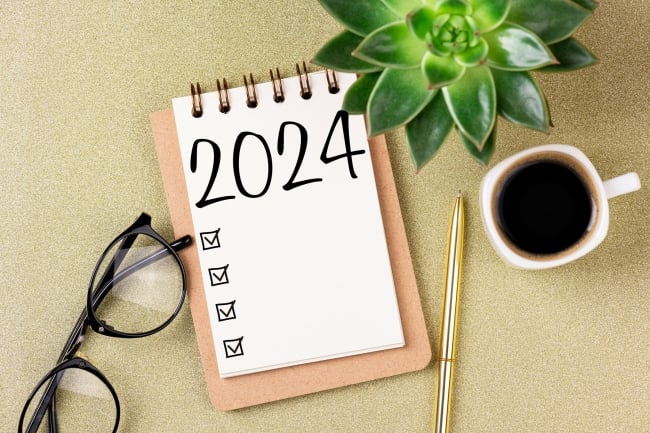You have /5 articles left.
Sign up for a free account or log in.

In making decisions for the 2024 calendar year, it helps to have a clear picture of today’s learners and the world of higher ed.
LanaSweet/iStock/Getty Images Plus
In creating effective student success interventions, higher education stakeholders must benchmark their progress and track metrics that gauge program goals and future sustainability. To assist in strategic planning for the upcoming year, Inside Higher Ed compiled 24 stats to consider in 2024.
- More than 600,000 new students from low-income backgrounds will be eligible for Pell Grant funding, due to the new Free Application for Federal Student Aid form, launching this winter. This brings the total number of students eligible for maximum Pell Grants to over 5.2 million.
- Upward transfers (from community colleges to universities) fell 7.5 percent in fall 2022, compared to the year prior.
- Just thirty-six percent of Americans have “a great deal” or “quite a lot” of confidence in higher education.
- Ninety percent of people see college campuses as places where disparate ideas and values can and should be discussed.
- Nineteen percent of teens who know about ChatGPT have used it for schoolwork.
- A little under 2 percent of college students are undocumented.
- Around one-third of students globally feel negative or neutral about their choice of college.
- Two-thirds of chief business officers at colleges and universities believe their institution has more academic programs, majors or departments than it should.
- Fifty-seven percent of chief financial officers in higher ed say mental health or wellness services were added or improved in 2022 for retention.
- Forty-six percent of faculty members say their students come to them with a mental health concern multiple times per month or more.
- Eight in 10 people agree that people are more open to going to therapy than they were before.
- Forty-eight percent of students doubted their ability to succeed in college when enrolling.
- The average student at a four-year in-state institution will pay $11,260 in tuition and $1,250 for books and supplies.
- Ninety-one percent of borrowers say financial stress is impacting their mental and physical wellness, with student loan debt as the key driver of this financial stress.
- Seventy percent of students prefer hybrid or fully digital courses over face-to-face instruction.
- Fifty-five percent of college students say their mental health is their top stressor, followed by their physical health (40 percent) and finances or paying off student loan debt (32 percent).
- Sixty-one percent of students spend three or more hours per day on social media, with most using TikTok.
- Thirty-six percent of young adults report anxiety, and 29 percent report depression, compared to 18 and 15 percent of teens, respectively.
- Teenagers (ages 11 to 17) check their phone on average over 100 times per day.
- Forty-two percent of high school seniors say the pandemic affected their thoughts on at least one college or career-related choice, and 33 percent changed their thoughts on two or more college- or career-related choices.
- Employees who acquire AI expertise could see their pay grow 35 percent or more, depending on their departments.
- About two-thirds of Gen Z grads define a high starting salary as $82,000 a year.
- Forty-six percent of employees believe their university failed to prepare them for their current role.
- Forty-one percent of the Class of 2024 are more likely to apply for a hybrid job; 22 percent are more likely to apply for a fully remote job.
A New Year’s resolution for readers: send us your new research related to student challenges, student supports or student success for consideration as a featured Number to Know in Inside Higher Ed’s Student Success daily.




